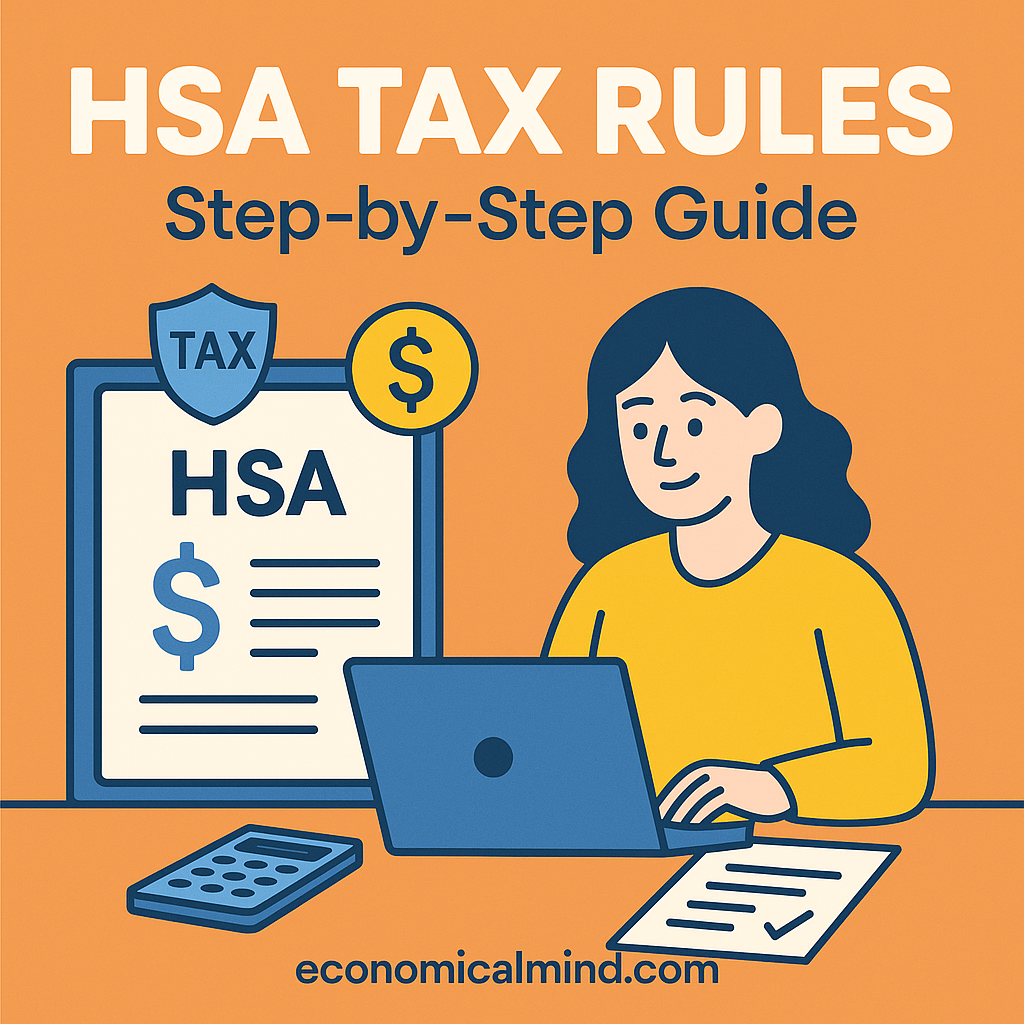
Why HSA Tax Rules Matter
A Health Savings Account (HSA) is one of the most tax-efficient tools available in the U.S.
It helps you save for medical expenses while cutting your tax bill — but only if you follow the rules.
Understanding how HSA contributions, withdrawals, and reporting work ensures you maximize tax benefits and avoid costly mistakes.
Step 1: Know What an HSA Is
An HSA is a special savings account for people enrolled in a High-Deductible Health Plan (HDHP).
You contribute pre-tax money, invest it, and use it for qualified medical expenses — all tax-free.
HSAs are triple tax-advantaged:
- Contributions are tax-deductible
- Growth is tax-free
- Withdrawals for qualified medical expenses are tax-free
This makes an HSA more powerful than a 401(k) or IRA in certain cases.
Step 2: Understand Eligibility Requirements
You can only contribute to an HSA if:
- You’re covered by a qualified HDHP
- You aren’t enrolled in Medicare
- You can’t be claimed as a dependent on someone else’s tax return
- You don’t have other non-HDHP coverage (like a spouse’s PPO plan)
For 2025, HDHP minimums are:
- $1,650 deductible (individual)
- $3,300 deductible (family)
If you meet these requirements, you’re eligible to open and contribute to an HSA.
Step 3: Know the Annual Contribution Limits
Each year, the IRS sets contribution limits. For 2025:
- $4,300 for individuals
- $8,550 for families
- +$1,000 catch-up contribution if you’re age 55 or older
You can contribute through:
- Payroll deductions (pre-tax through your employer)
- Direct contributions (tax-deductible when filing)
Exceeding these limits can trigger IRS penalties, so always double-check before year-end.
Step 4: Track Qualified Medical Expenses
Withdrawals are tax-free only for qualified medical expenses, including:
- Doctor visits and hospital services
- Prescription drugs
- Dental and vision care
- Mental health therapy
- Medical equipment (hearing aids, wheelchairs, etc.)
Non-qualified expenses — like cosmetic surgery, gym memberships, or over-the-counter supplements — are taxed as income and hit with a 20% penalty if you’re under 65.
Pro tip: Keep all receipts! You may reimburse yourself years later if you’ve saved documentation.
Step 5: Learn How Taxes Work at Withdrawal
Withdrawals from your HSA have different tax treatments depending on how you use the money:
- Qualified expenses: Tax-free
- Non-qualified before age 65: Income tax + 20% penalty
- Non-qualified after age 65: Only income tax (no penalty)
That means after 65, your HSA can act like a Traditional IRA — flexible for any spending, though medical use remains tax-free.
Step 6: Report Your HSA Correctly on Taxes
Every HSA must be reported on your tax return each year.
The key IRS forms include:
- Form 8889: Tracks contributions, withdrawals, and balances
- Form 5498-SA: Provided by your HSA custodian (shows total contributions)
- Form 1099-SA: Lists withdrawals made during the year
If you use tax software like TurboTax or FreeTaxUSA, these forms are usually auto-imported from your provider.
Step 7: Avoid Common Tax Mistakes
HSA errors can trigger penalties or unnecessary taxes. Watch out for:
- Overcontributing: You’ll owe a 6% excise tax on excess amounts.
- Using funds for non-qualified expenses: You’ll owe taxes plus 20% penalty if under 65.
- Not keeping receipts: The IRS can require proof years later.
- Forgetting to name a beneficiary: Without one, your HSA becomes taxable income upon death.
Stay organized, and your HSA will remain one of the most tax-efficient tools you own.
Bonus Tip: Invest Your HSA for Long-Term Growth
Once your balance exceeds your deductible, consider investing your HSA funds in index funds or ETFs.
Many HSA providers let you grow the money tax-free, compounding like a mini-retirement account.
Use your HSA not just for medical bills — but as a strategic wealth-building tool.
Final Thoughts
Understanding HSA tax rules can save you thousands in the long run.
By contributing within limits, tracking expenses, and using funds strategically, you’ll enjoy tax-free growth and flexibility for years to come.
Your HSA isn’t just a medical account — it’s a tax-optimized investment in your future.
